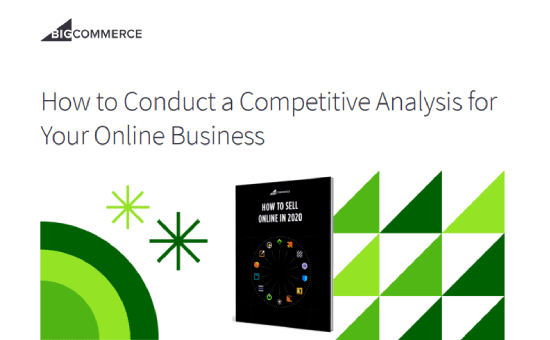How to Conduct a Competitive Analysis for Your Online Business | BigCommerce
Digital Asset Management
If you are running an online business, whether if you are new to the market or even launching a new product\service out there, there is an essential action to take; you probably have heard about that. It’s the “Competitor Analysis”.
A competitive analysis allows you to analyze your competition and keep an eye of them on an ongoing basis, that means knowing their behavior and expecting their actions, finally, that leads to being one step ahead of them and develop your differentiators and find out what will give consumers a reason to choose your product\service over anyone else’s.

BigCommerce Guide: How to Conduct a Competitor Analysis
Download the BigCommerce complete in-depth guide and learn how to conduct competitor analysis and grow your eCommerce brand in 2020.
What Is Competitive Analysis?
Competitive research is not just a simple SWOT analysis which is used to define the strengths, weaknesses, opportunities, and threats related to business competition planning.
Competitive analysis is a must-do action and pivotal to your business success, in order to be successful you have to dive deep into the competitive research.
It allows you to identify industry trends as well as adapting to competitor campaigns or strategies to maintain a foundation or out-compete them completely.
The Key Steps to a Successful Competitor Analysis
Simply, Conducting a competitive analysis is not a challenging thing to do, however, it is substantial. The following are easy-to-use steps to help you with the process:
1. Identifying Competitors: this step is crucial because afterward you will be able to capitalize on your competitors’ weaknesses and strengths and that helps you to work on your business and understanding the competition around you.
2. Examine Your Competitor’s Customer Experience and Website: this is the next thing to do after identifying your competitor, you would want to analyze their website and how they display their products\service, what are their calls to action. what tools they use, and how do they manage their online content.
3. Identify Your Competitor’s Market Positioning: this step allows you to feel your market’s demands and expectations.
4. Do not Forget to Take a Look at Pricing: the important thing about every online business is the pricing strategy, this what mostly captures the customer’s attention and can be your competitive advantage. Make sure to take a look at several websites, products, and services; compare what they offer and pricing and what you are offering and your pricing.
5. Problem Solve for Shipping: having reasonable, competitive shipping costs is highly important for your online business’s success.
Related Guide: The Guide to Dropshipping 101: Ecommerce Without Inventory
6. Check the Reviews: this can give you a benefit and let your online business shine more than your competitors. Take the time to find as many reviews of your competitors as possible.
7. Review Social Media: looking at the competitors’ social media accounts has many benefits. For instance, if they are active and engaging with the customers that mean here is a market for your products, other than that, you will get a sneak peek about how customers fell about their business and what they like and do not like about their business.
There is no need to mention that if your competitor is having good engagement you will need to step up your game to be ahead of them.
Number of Pages:
- 12 Pages
Pricing:
- Free

BigCommerce
Warning: Undefined array key "sidebar_ads" in /home/dmc/public_html/wp-content/themes/DMC/functions/helpers.php on line 824





